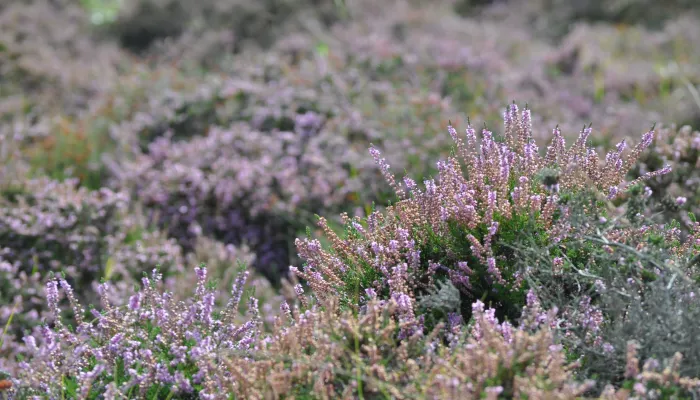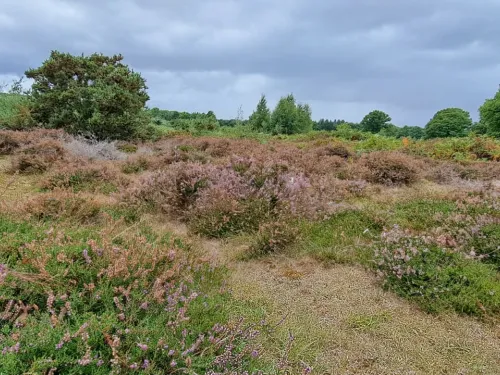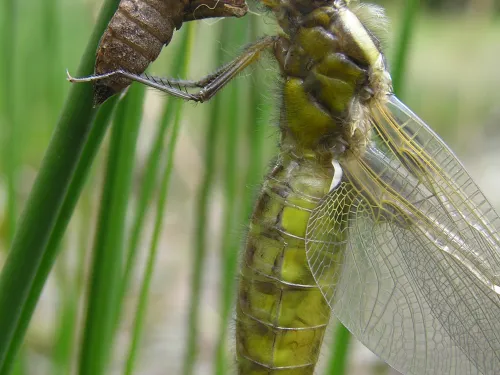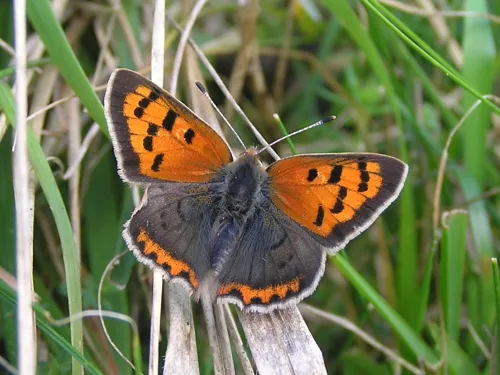About the reserve
A visit to Hothfield Heathlands is a visit to one of the last remaining heathlands in Kent. After walking through a narrow canopy of broadleaved trees, you break through to reveal the wide-open landscape of Hothfield Heathlands. The spring will bring with it the fresh green growth of Heather, gorse and a myriad of tiny plants.
The coconut scented gorse bushes provide the perfect perch for many bird species, Yellowhammers, White Throat and Willow Warblers all sing boldly from these prickly bushes. Make sure you keep an eye on the floor too, the finger-sized holes of the minotaur beetle are scattered liberally across the bare ground, while the metallic Green Tiger Beetle will be buzzing vigorously around your feet.
A series of waymarked paths allow you to explore most of this unique site, with boardwalks allowing access to some of the wettest parts of the reserve. These wet bogs are home to a wonderful collection of rare plants, many of which are found only at Hothfield. Carnivorous Round Leaved Sundew, cotton grass, bog asphodel and heath spotted orchids are amongst the most dramatic.
The reserve is managed by Kent Wildlife Trust on behalf of Ashford Borough Council.
Our new Triangle Trail at Hothfield Heathlands is a 500m all weather accessible trail, with a smooth even surface path, regular passing places and some gradual slopes.
Find out more
Scrub Removal
Our volunteer teams regularly carry out scrub removal from across the reserve.
The most vigorous scrub species are birch and alder, adapted to grow very quickly from seed, they are the pioneer species that would pave the way for the site becoming a woodland.
Although woodland is a very important habitat, and Kent Wildlife Trust manages thousands of acres of woodland across Kent. However, quality heathland and bog, the main habitats at Hothfield, are not found anywhere else in Kent. Losing this area to woodland would wipe out hundreds of species that would not survive under a canopy of trees.
The trees also have a further detrimental effect on the bogs, sucking up thousands of gallons of water, drying out the peatland. Once the bogs lose their moisture the peat dries up and the carbon stored for hundreds of years gets released back into the atmosphere.
If you have any questions about this work, or would like to help out, please contact the Ashford Warden at [email protected]
Path Improvements
We carry out path improvements on the rest of the reserve, using sand to raise some of the muddier paths and making them easier to navigate over the winter. There are also a number of raised boardwalks that we regularly maintain.
Fencing works
To keep the cattle, ponies and sheep are safe and secure our fences need regular maintenance or replacement.
Volunteer Work
Our wonderful volunteers work all year round on the reserve. Tree popping birch from the heathland, repairing fences, building dead hedges, fixing paths, looking after the livestock and all the other work that this tireless gang carry out.
The volunteers are out every Tuesday and Thursday and also the first Sunday of every month.
Contact Us
If you need to get in touch regarding Hothfield Heathlands, for any reason, please contact:
Will Glasson
Contact number: 01622 662012
Contact email: [email protected]
Environmental designation
- Local Nature Reserve (LNR)
- Local Wildlife Site (LWS)
- Site of Special Scientific Interest (SSSI)







